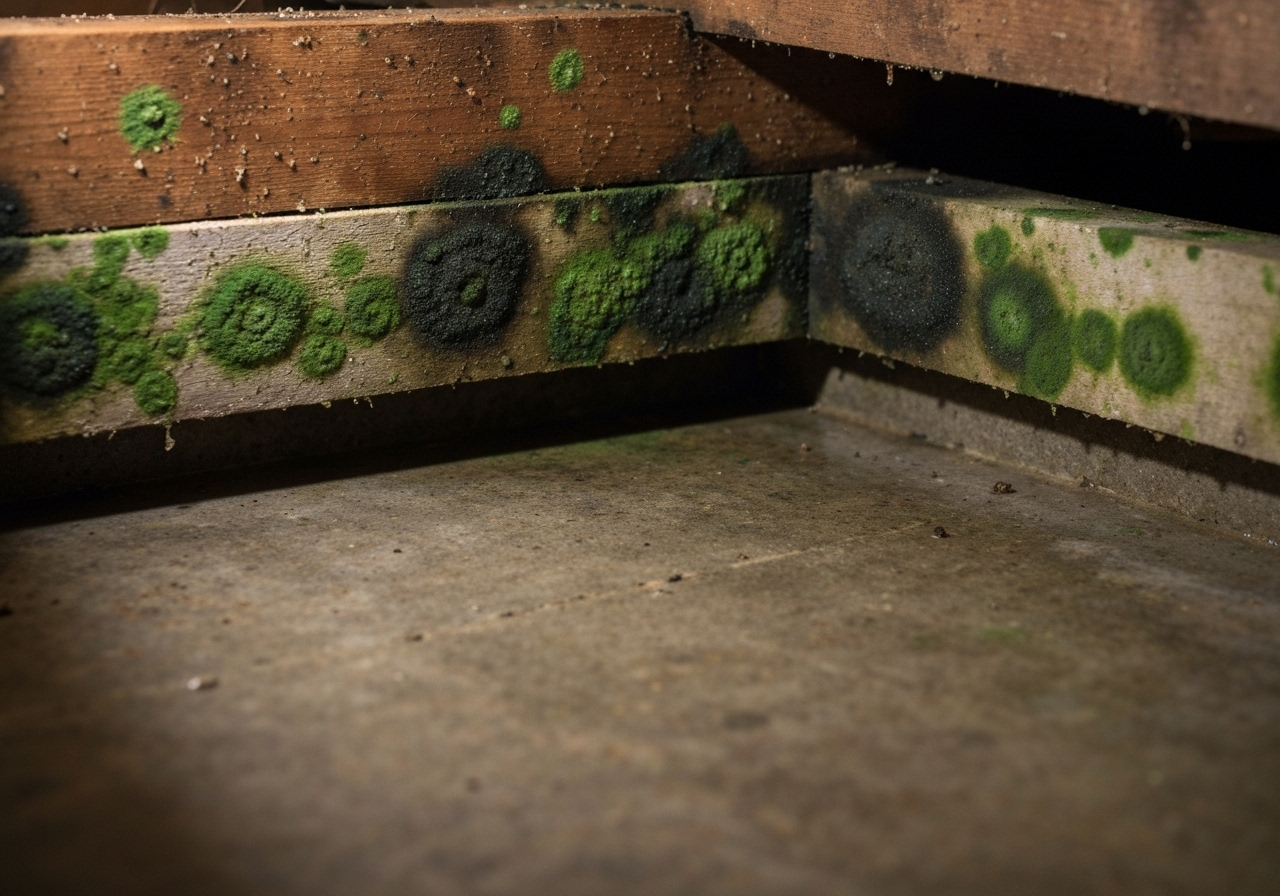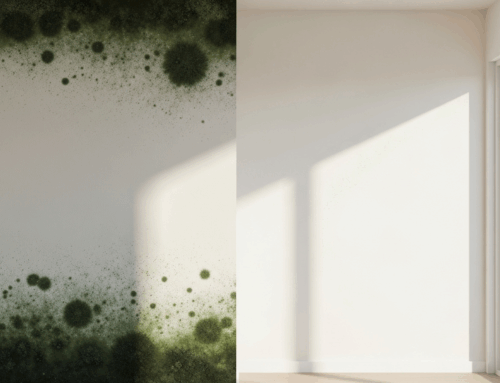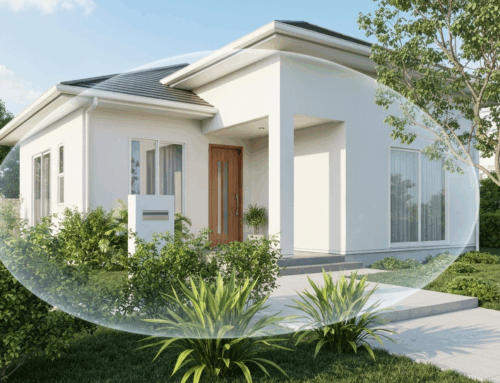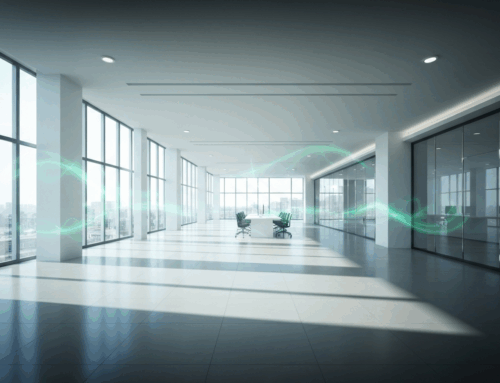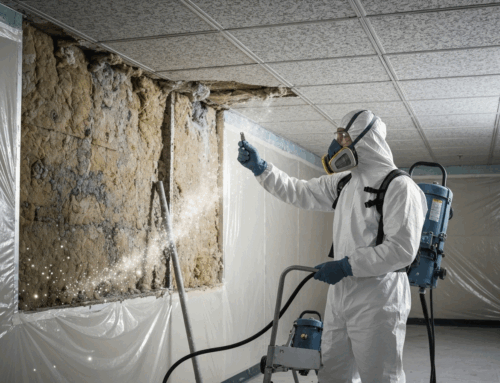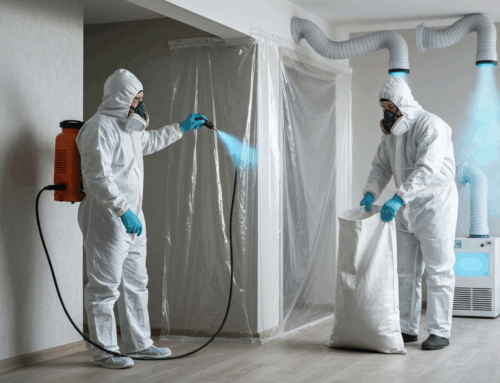The Unseen Threat: Understanding Indoor Mold in South Carolina
In South Carolina, property owners face a persistent and often invisible enemy: indoor mold. More than just an unsightly stain or a musty smell, mold growth within homes and businesses poses significant health risks and can lead to extensive property damage. Understanding the nature of mold and its prevalence in the Palmetto State is the crucial first step in effective prevention and remediation. Mold, a type of fungus, thrives in damp environments, reproducing through microscopic spores that are naturally present in the air. When these spores land on a moist surface with an organic food source, they rapidly colonize, leading to the visible growth and distinctive odor associated with mold.
What is Indoor Mold and Why it Matters for Your Property
Indoor mold refers to any type of mold growing inside a building. While some molds are harmless, and even beneficial in nature, their presence indoors is almost always indicative of a moisture problem and can lead to detrimental effects on both health and property. Common types of indoor mold include Cladosporium, often found on wood or carpets, Penicillium, which can grow under carpets and in insulation after water damage, and Aspergillus, thriving in fabrics, walls, and attics. The infamous “black mold,” or Stachybotrys chartarum, is a greenish-black mold that grows on high-cellulose materials like drywall.
The significance of indoor mold for your property cannot be overstated. Beyond the aesthetic damage and unpleasant odors, mold actively breaks down organic materials, including wood, drywall, insulation, and fabrics. Over time, this deterioration can compromise the structural integrity of your building, necessitating costly repairs and potentially diminishing your property’s value. For instance, mold can significantly impact a home’s resale value, potentially reducing it by 20% to 37% depending on the severity of the issue.
South Carolina’s Climate and Your Property’s Mold Risk
South Carolina’s unique climate is a primary driver of its elevated mold risk. The state is characterized by long, hot, and persistently humid summers, often combined with frequent rainfall and the threat of severe weather events like hurricanes and tropical storms. This consistent high humidity, even without direct flooding, creates an ideal breeding ground for mold spores to flourish indoors. As discussed in our article, “Humidity, Hurricanes & Health: Unpacking Mold Risks In South Carolina,” these environmental factors demand a proactive approach to moisture control.
Common culprits for moisture issues in South Carolina properties that contribute to mold growth include:
- High indoor humidity due to climate or lack of proper ventilation.
- Leaky roofs, pipes, or foundations that allow water intrusion.
- Flooding events, which quickly saturate building materials.
- Condensation on cold surfaces like windows or pipes.
- Damp crawl spaces or basements, which are prevalent in many SC homes.
These factors combine to create an environment where mold can not only take hold but also spread rapidly, frequently remaining undetected in hidden areas until the problem becomes severe.
Identifying the Silent Invader: Signs of Mold Growth
Early identification of mold is critical to mitigating its impact. While some mold growth is visible, often appearing as black, green, or white fuzzy patches, it frequently lurks in hidden areas, making detection challenging without a professional assessment. Here are key indicators that mold might be present in your South Carolina property:
- Musty Odor: A strong, earthy, or stale smell is often the most reliable sign of hidden mold growth. Even without visible mold, a persistent musty odor points to a problem.
- Visible Growth: Look for discolored patches on walls, ceilings, floors, or around windows. Mold can appear in various colors and textures.
- Water Damage: Any signs of past or current water intrusion, such as stains, peeling paint, or warped materials, significantly increase the likelihood of mold.
- Health Symptoms: Unexplained allergic reactions, respiratory issues, or persistent cold-like symptoms that improve when you leave the property can be a strong indicator of indoor mold exposure.
- Excessive Condensation: Persistent condensation on windows, pipes, or walls can signal high humidity levels, creating an environment ripe for mold.
Home inspectors in South Carolina are trained to identify these subtle warnings and signs of moisture intrusion. If you suspect mold, especially if occupants are experiencing unexplained health symptoms, a professional inspection is highly recommended to accurately assess the extent of the problem and identify its source.
Health Impacts of Indoor Mold: Protecting Your Family and Employees
The health implications of indoor mold exposure are a serious concern for both residential and commercial property occupants. While not everyone reacts to mold in the same way, exposure can trigger a range of symptoms, particularly in individuals with sensitivities, allergies, asthma, or compromised immune systems. According to WebMD, mold can irritate the eyes, skin, nose, throat, and lungs.
Common Health Issues Associated with Mold Exposure:
- Respiratory Problems: Coughing, wheezing, and shortness of breath are common, especially for those with asthma or other chronic lung conditions.
- Allergic Reactions: Symptoms can include sneezing, runny nose, red eyes, and skin rashes.
- Asthma Attacks: Mold exposure can trigger or worsen asthma symptoms in susceptible individuals.
- Headaches and Fatigue: Some individuals report persistent headaches and general fatigue when exposed to mold.
- Irritation: Direct contact or inhalation of spores can cause irritation of the eyes, nose, throat, and skin.
Long-term or chronic exposure to indoor mold has been linked to more severe health complications. For instance, Harvard Health Publishing notes that childhood exposure to household mold raises the risk of developing asthma and that prolonged exposure can increase stress, depression, and anxiety, as well as lead to elevated inflammation markers in the body. Protecting your family and employees from these potential health hazards requires prompt and effective action when mold is discovered.
Proactive Steps: Preventing Indoor Mold in Your South Carolina Home or Business
Preventing indoor mold in South Carolina properties demands a proactive and consistent approach, with a primary focus on moisture control. By implementing effective strategies, property owners can significantly reduce their risk of mold infestations. This goes beyond simply cleaning up visible mold; it involves addressing the root causes of moisture accumulation.
Key Prevention Strategies:
- Control Humidity Levels: Maintain indoor humidity between 30-50%, especially during the humid months. Utilize dehumidifiers in damp areas like basements and crawl spaces. Ensure proper ventilation in bathrooms, kitchens, and laundry rooms, making sure exhaust fans vent outside, not into attics.
- Address Leaks Promptly: Fix any leaky roofs, pipes, or faucets immediately. Even small drips can lead to significant mold growth over time. Regularly inspect for hidden leaks, looking for water stains or peeling paint.
- Improve Ventilation: Ensure adequate airflow throughout your property. Open windows when weather permits (and outdoor humidity is low), and use exhaust fans when showering or cooking. Consider improving ventilation in crawl spaces and attics, which are particularly vulnerable in SC.
- Clean and Dry After Water Damage: In the event of floods or leaks, thoroughly clean and dry all affected areas within 24-48 hours. This includes structural components and furnishings. Professional water damage restoration may be necessary for significant events, such as those discussed in “Post-Flood: Asbestos Mold Remediation South Carolina Floods.”
- Maintain Gutters and Drainage: Ensure gutters are clear of debris and downspouts direct water away from the foundation to prevent moisture accumulation around your property.
- Proper HVAC Maintenance: Regularly inspect and clean your HVAC system, including air ducts. A well-maintained system helps control humidity and prevents it from becoming a source or distributor of mold spores.
For more expert strategies on prevention, refer to our article on “Expert Strategies to Prevent Indoor Mold in South Carolina Homes for a Healthier Home.” Consistent vigilance and maintenance are key to keeping your South Carolina property mold-free.
Beyond DIY: When Professional Mold Remediation is Essential
When faced with indoor mold, many property owners consider DIY removal. However, for significant mold growth, professional mold remediation is not just convenient but often essential for safety and effective eradication. Attempting to remove extensive mold without proper training, equipment, and safety precautions can inadvertently spread spores, worsening the problem and increasing health risks.
Risks of DIY Mold Removal:
- Incomplete Removal: Without specialized knowledge and tools, it’s easy to miss hidden mold or fail to address the underlying moisture issue, leading to recurrence.
- Health Exposure: Disturbing mold without appropriate personal protective equipment (PPE) can release millions of spores into the air, increasing personal exposure and potential health risks.
- Cross-Contamination: DIY methods can inadvertently spread mold spores to other areas of the property, expanding the contaminated zone.
- Lack of Expertise: Professionals understand different mold types, their growth patterns, and the best techniques for safe containment and removal, as well as proper disposal of contaminated materials.
According to The Spruce, moldy areas less than 10 square feet can sometimes be handled by the homeowner, but for larger areas, a professional is recommended. Professional remediators use specialized equipment, including HEPA vacuums and air scrubbers, and follow strict protocols to contain the affected area, safely remove mold, and prevent its return. They also meticulously address the moisture source, which is critical for long-term prevention. In South Carolina, while there isn’t comprehensive state legislation for mold in residential properties, legislative efforts like the “Indoor Mold Remediation Act” (H. 5231) have highlighted the need for professional standards and licensing for mold assessment and remediation services, underscoring the complexity and specialized nature of the work.
Piedmont Quality Air’s Approach to Effective Mold Removal
At Piedmont Quality Air, we are dedicated to providing thorough and effective mold remediation services, protecting the health and safety of South Carolina property owners. Our comprehensive process is designed to address indoor mold at its source and restore your environment to a healthy state. We bring experienced and trained professionals, specialized equipment, and strict adherence to federal and state regulations to every project.
Our Comprehensive Mold Remediation Process:
- Initial Assessment and Inspection: Our trained professionals conduct a detailed inspection to identify the extent of mold growth, its type, and, crucially, the underlying moisture source. This step is vital for developing a targeted remediation plan, as outlined in our article “Protect Your Home: Professional Mold Inspection South Carolina.”
- Containment: To prevent the spread of mold spores to unaffected areas, we establish containment barriers using plastic sheeting and negative air pressure. This isolates the contaminated zone.
- Air Filtration: High-efficiency particulate air (HEPA) filters and air scrubbers are utilized to continuously clean the air, capturing airborne mold spores and improving indoor air quality.
- Mold Removal: Affected materials, if non-salvageable, are safely removed and disposed of according to industry standards. Surfaces are cleaned using specialized antimicrobial agents to eliminate mold colonies.
- Drying and Dehumidification: We thoroughly dry the affected areas and implement dehumidification strategies to remove excess moisture, preventing future mold growth. This is particularly important for areas like crawl spaces, as discussed in “Crawl Space Mold Removal SC: Protect Your SC Home Now.”
- Post-Remediation Verification: Once the remediation is complete, we conduct a final inspection to ensure that the mold has been successfully removed and the environment is safe.
- Restoration: We assist with restoring any damaged structural elements or contents, returning your property to its pre-mold condition. This helps in “Successfully Restoring SC Home Value After Mold.”
Our team adheres to federal and state regulations, ensuring a safe and compliant remediation process from start to finish, ultimately enhancing the indoor air quality of your property.
Ensuring a Healthy Indoor Environment: Your Next Steps
Addressing indoor mold in your South Carolina property is a critical undertaking that safeguards both your property’s value and the health of its occupants. Given South Carolina’s challenging climate, vigilance and expert intervention are often necessary. Understanding the causes of mold, recognizing its signs, and implementing effective prevention strategies are essential steps toward maintaining a healthy indoor environment.
If you suspect mold in your home or business, or if you’ve experienced water damage, taking swift action can prevent minor issues from escalating into major problems. For comprehensive solutions, from expert inspections to professional remediation, specialized services offer the knowledge and equipment to ensure a healthy and safe indoor environment. Prioritizing indoor air quality is a foundational step towards a healthier living or working space for everyone.
Visit our Contact Us page.

